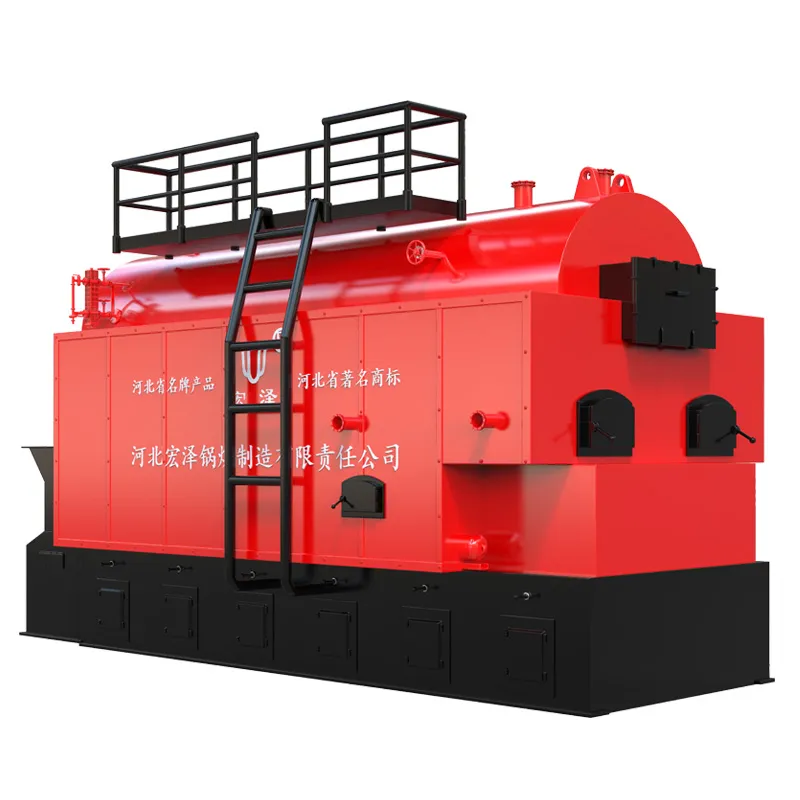
12월 . 03, 2024 17:51 Back to list
steam boiler components and functions
Understanding Steam Boiler Components and Their Functions
Steam boilers are vital components in various industrial processes and commercial applications. They are designed to generate steam by applying heat energy to water, making them essential for heating, power generation, and numerous industrial processes. Understanding the components of a steam boiler and their functions can help ensure efficient and safe operation.
1. Boiler Shell
The boiler shell is the outer casing of the steam boiler, typically made of robust steel or iron. It serves several essential purposes it contains the water and steam within the boiler, provides structural integrity, and protects the internal components. The design of the boiler shell plays a crucial role in the overall efficiency and safety of the boiler.
2. Heat Exchanger
The heat exchanger is a critical component where heat is transferred from the combustion process to the water in the boiler. It consists of a series of tubes or plates that allow for maximum contact between the hot gases produced from burning fuel and the water. This efficient heat transfer is essential for generating steam quickly and effectively. The design and materials of the heat exchanger can vary depending on the boiler's application and fuel type.
3. Burner
The burner is responsible for introducing fuel into the combustion chamber and mixing it with air to produce heat. Burners can operate on various fuel types, including natural gas, oil, coal, or biomass. The efficiency of the burner directly affects the boiler’s overall efficiency. Modern burners often incorporate advanced technologies that optimize the combustion process, ensuring minimal emissions and maximum heat output.
4. Combustion Chamber
The combustion chamber is where the fuel is burned to generate heat. It is designed to withstand high temperatures and pressure, ensuring safe and efficient combustion. The combustion chamber's size and design significantly influence the boiler's efficiency and steam output.
5. Steam Drum
steam boiler components and functions

The steam drum is an essential component in water-tube and some fire-tube boilers. It is a large vessel where steam is separated from the water when the water reaches boiling point. The steam drum allows for the accumulation of generated steam while enabling the return of any unconverted water back to the system for further heating. This ensures continuous steam generation and maintains the system’s efficiency.
A reliable water feed system is necessary to supply the boiler with water. This system typically includes pumps and feedwater controls that maintain the correct water level within the boiler. Adequate water supply is crucial, as insufficient water can lead to overheating and damage to the boiler components. Automatic water level controls are often integrated into modern systems for efficiency and safety.
7. Safety Valves
Safety valves are a critical safety component within any steam boiler system. They are designed to release excess pressure automatically, preventing the boiler from exceeding safe operating limits. This is crucial for preventing explosions or other hazardous failures. Regular maintenance and testing of safety valves are essential to ensure their reliability.
8. Controls and Instrumentation
Modern steam boilers are equipped with advanced control systems and instrumentation to monitor and optimize performance. These controls allow operators to adjust temperatures, pressures, and other critical parameters, ensuring efficient operation. Sensors and alarms are also installed to detect any anomalies or malfunctions, enhancing safety and operational efficiency.
9. Insulation
Good insulation is vital for maintaining energy efficiency in steam boilers. Insulation materials are used to cover the boiler shell, pipes, and other components to minimize heat loss. This not only conserves energy but also protects personnel from burns and other heat-related hazards.
Conclusion
Understanding the main components and functions of steam boilers is essential for anyone involved in their operation or maintenance. Each component plays a vital role in ensuring the boiler runs efficiently and safely. Regular maintenance and monitoring of these components help optimize performance, extend the lifespan of the boiler, and ensure compliance with safety regulations. In industries where steam boilers are employed, knowledge of these components can lead to improved efficiency, reduced costs, and enhanced safety standards.
-
High-Efficiency Commercial Oil Fired Steam Boiler for Industry
NewsJul.30,2025
-
High-Efficiency Biomass Fired Thermal Oil Boiler Solutions
NewsJul.30,2025
-
High Efficiency Gas Fired Thermal Oil Boiler for Industrial Heating
NewsJul.29,2025
-
High-Efficiency Gas Fired Hot Water Boiler for Sale – Reliable & Affordable
NewsJul.29,2025
-
High Efficiency Biomass Fired Hot Water Boiler for Industrial and Commercial Use
NewsJul.29,2025
-
High-Efficiency Biomass Fired Hot Water Boiler for Industrial Use
NewsJul.28,2025
Related PRODUCTS






















